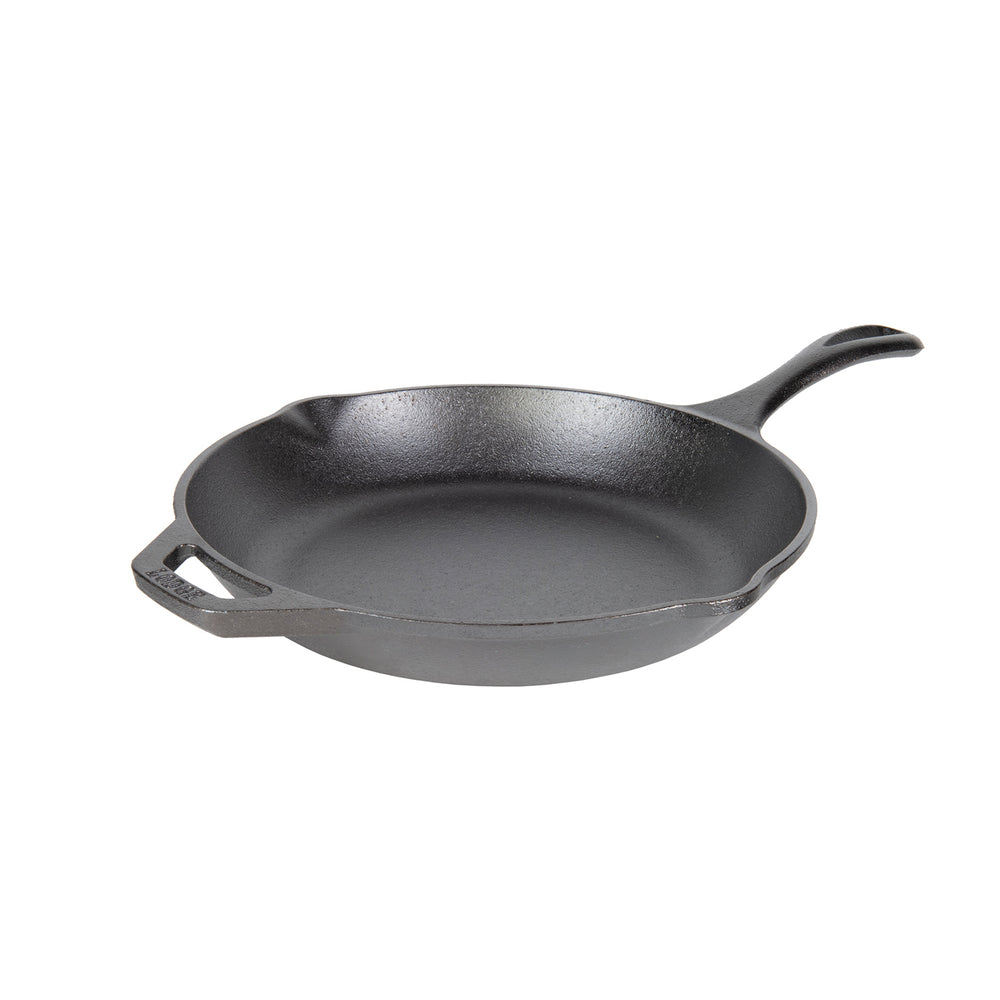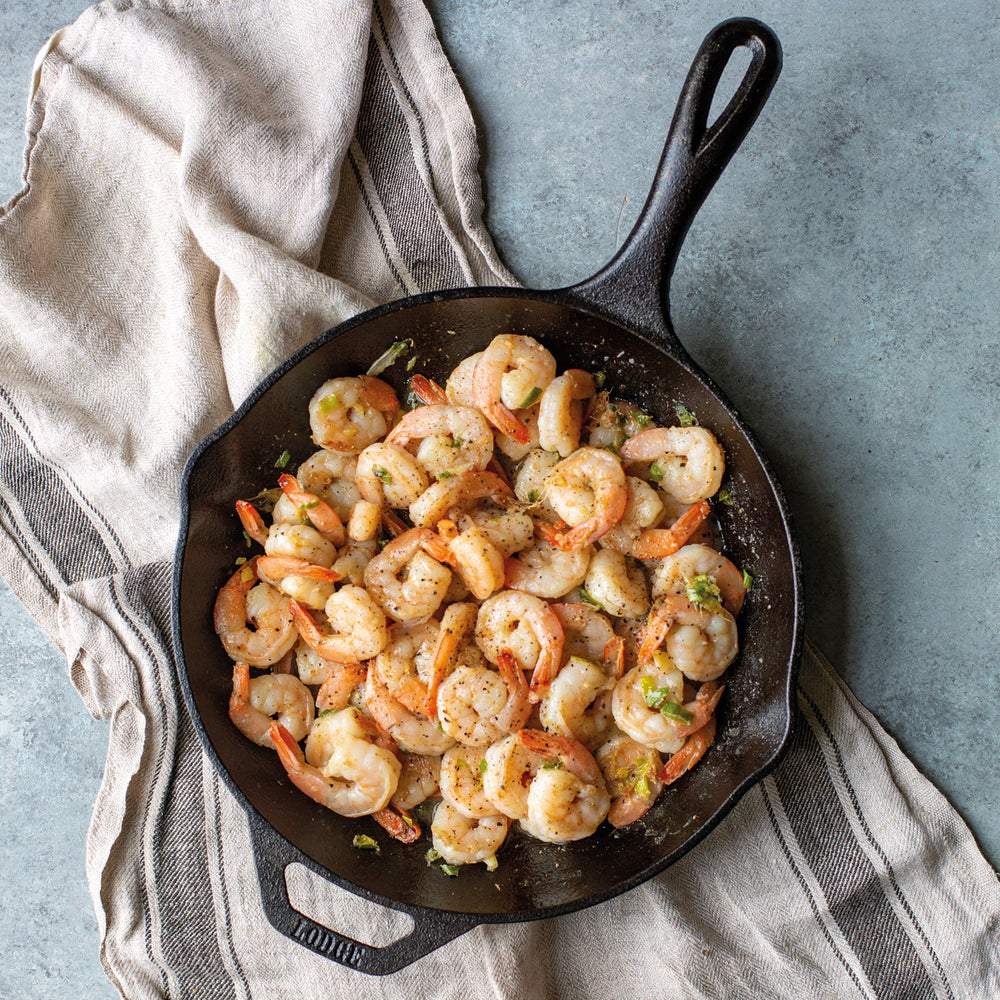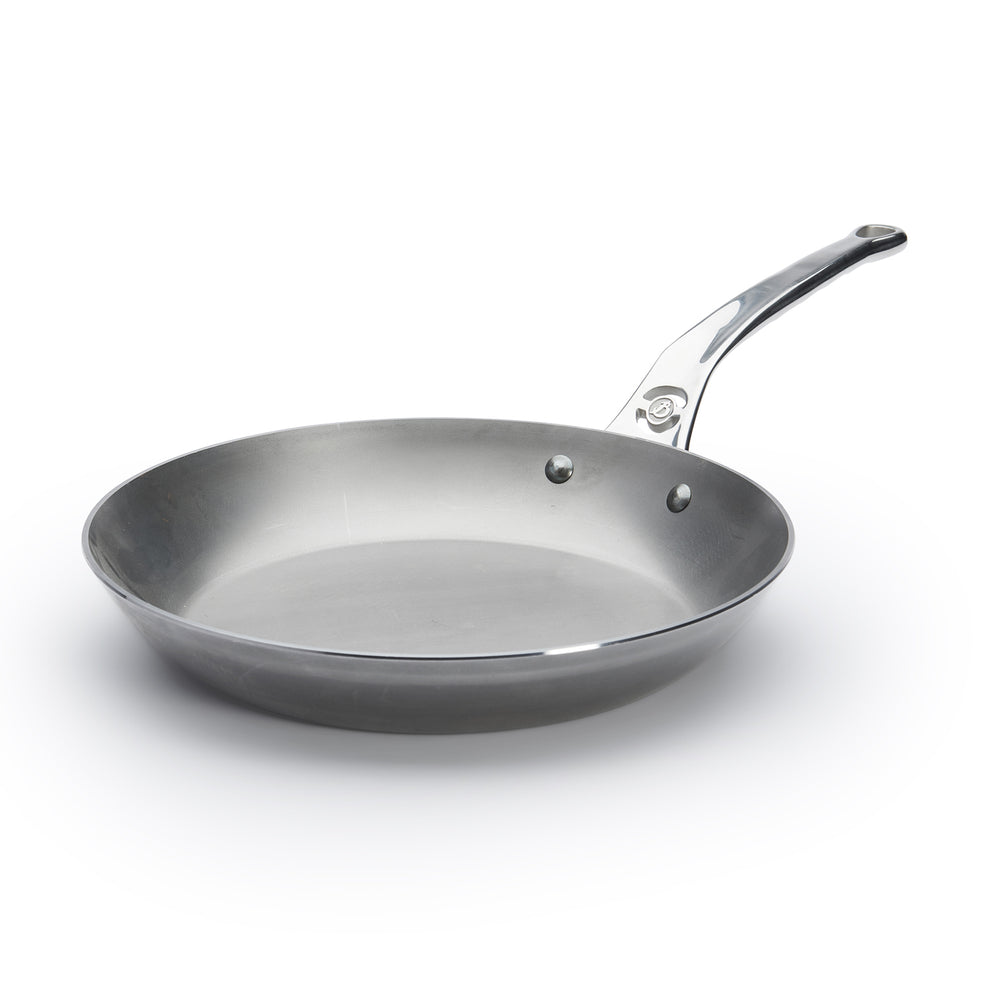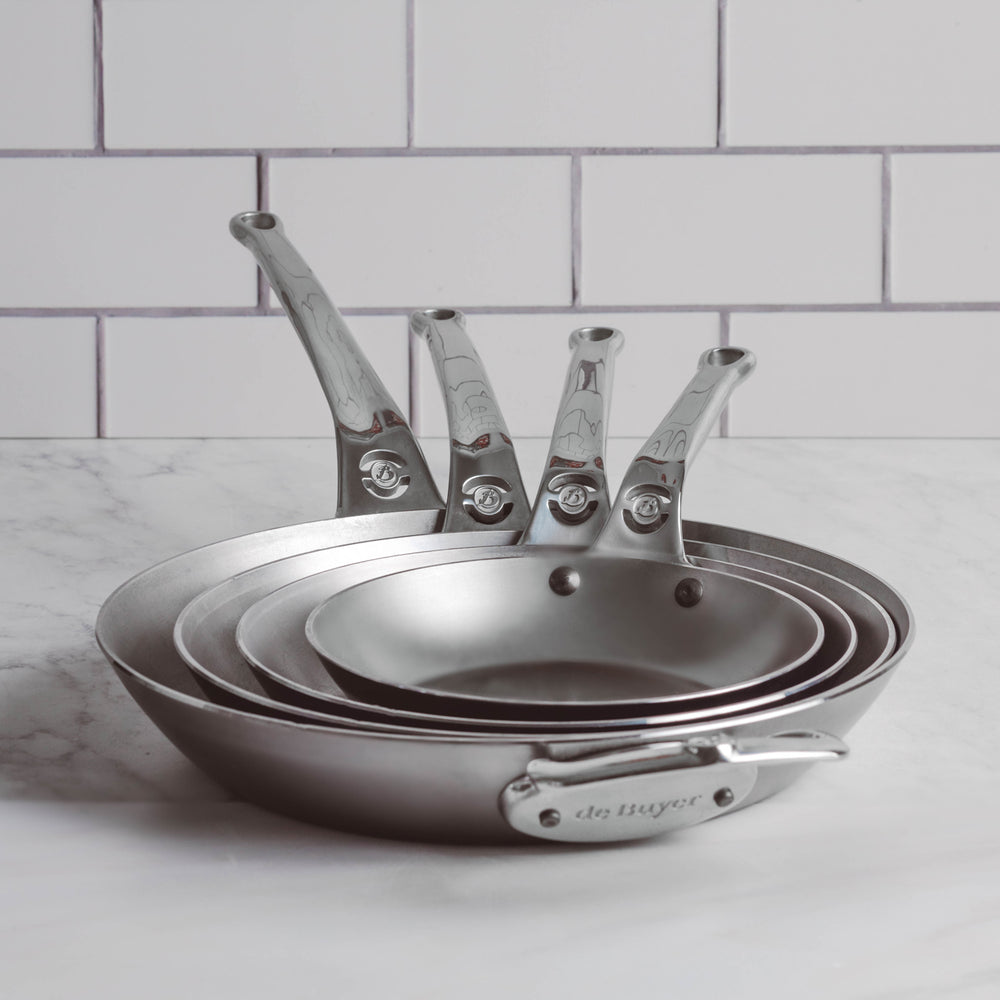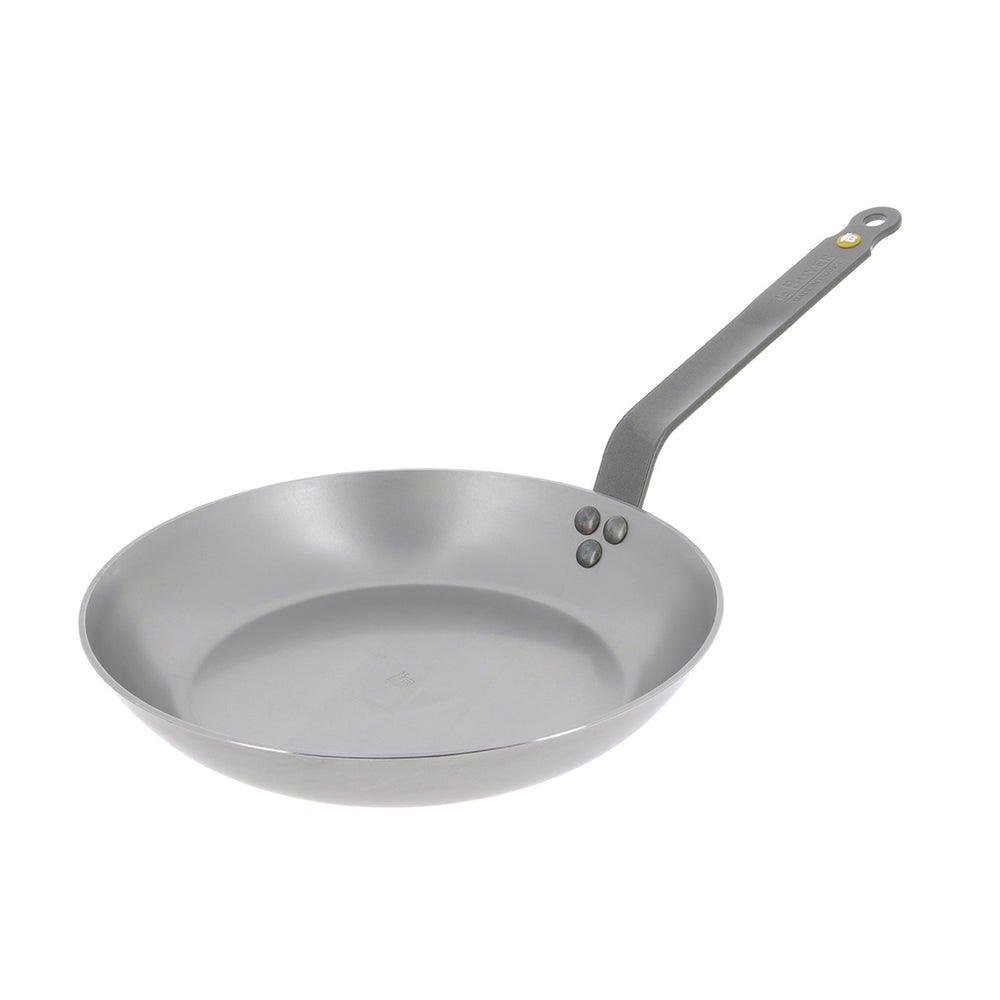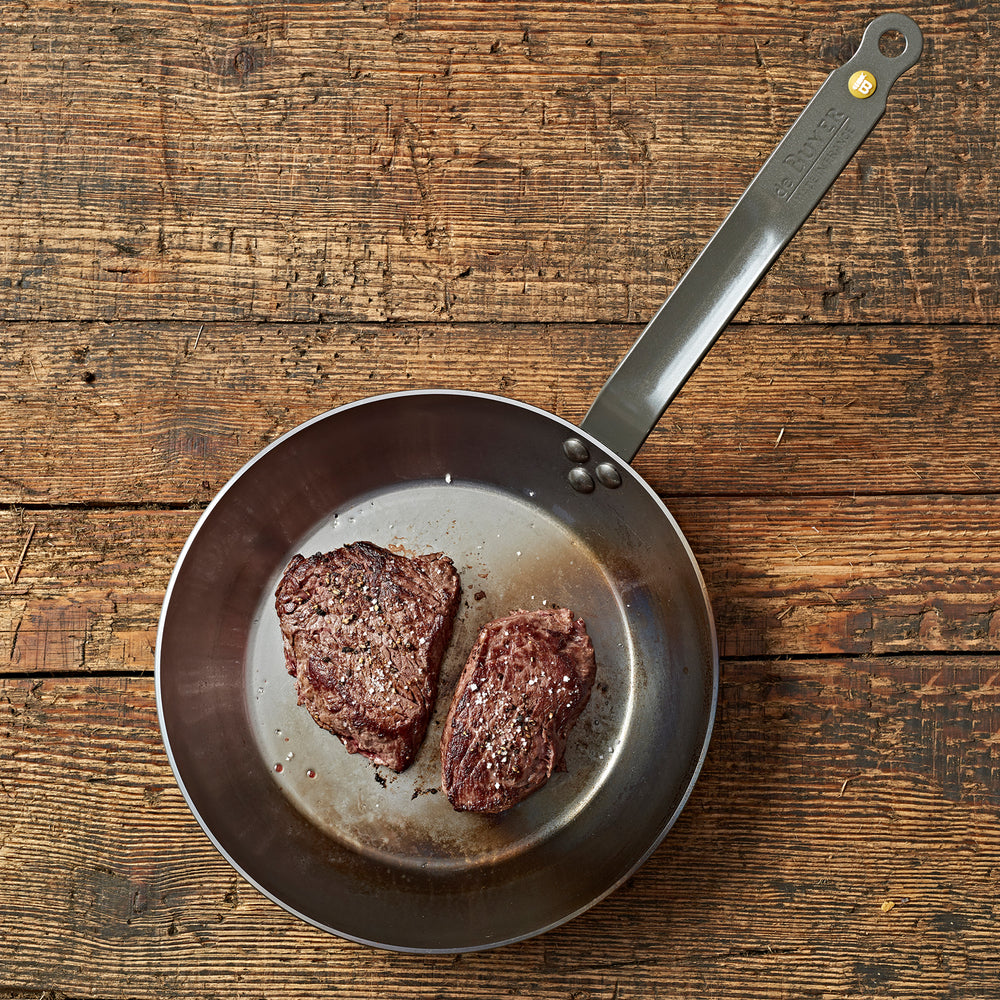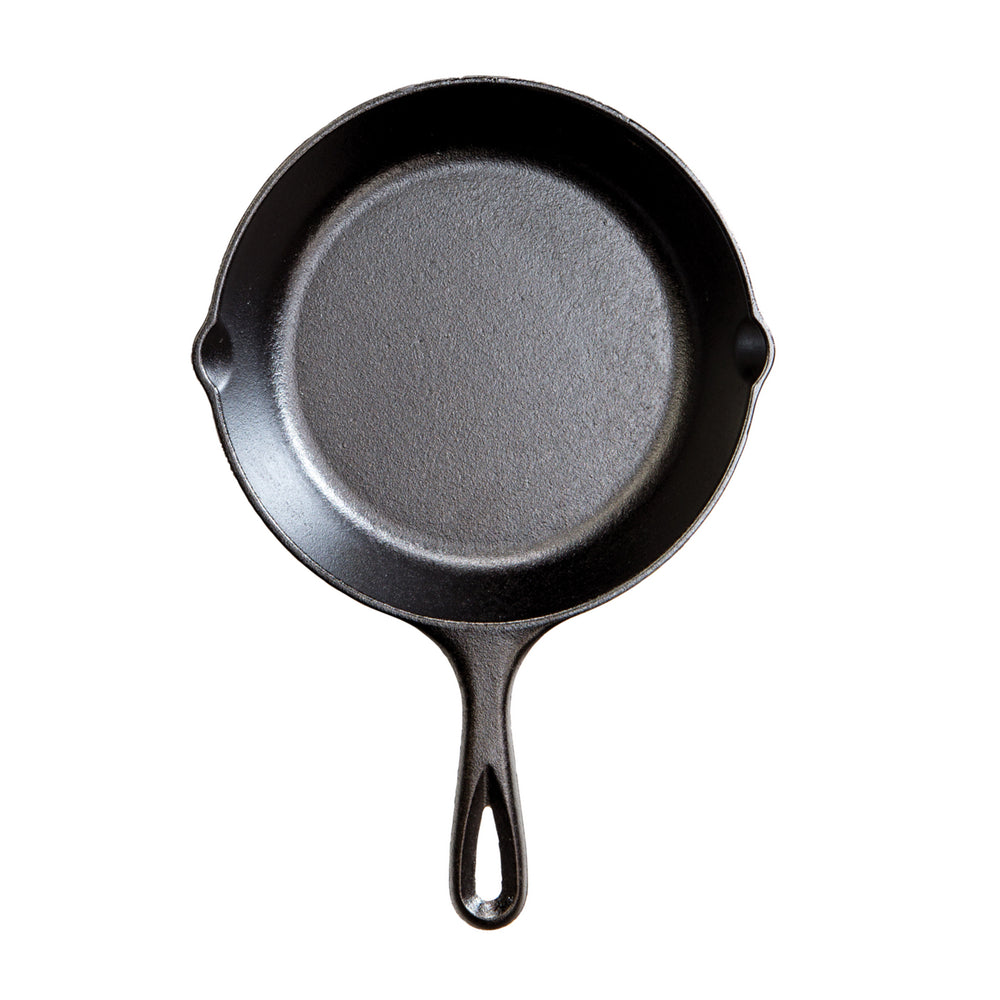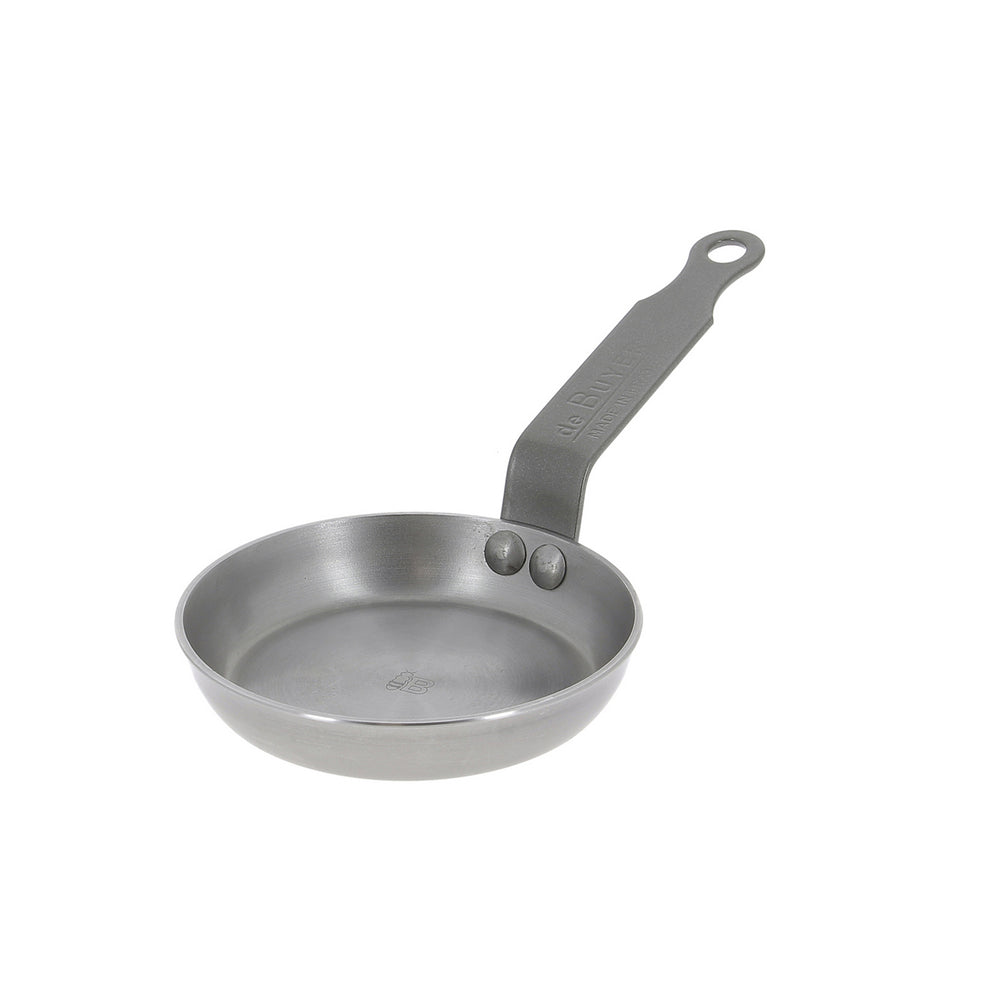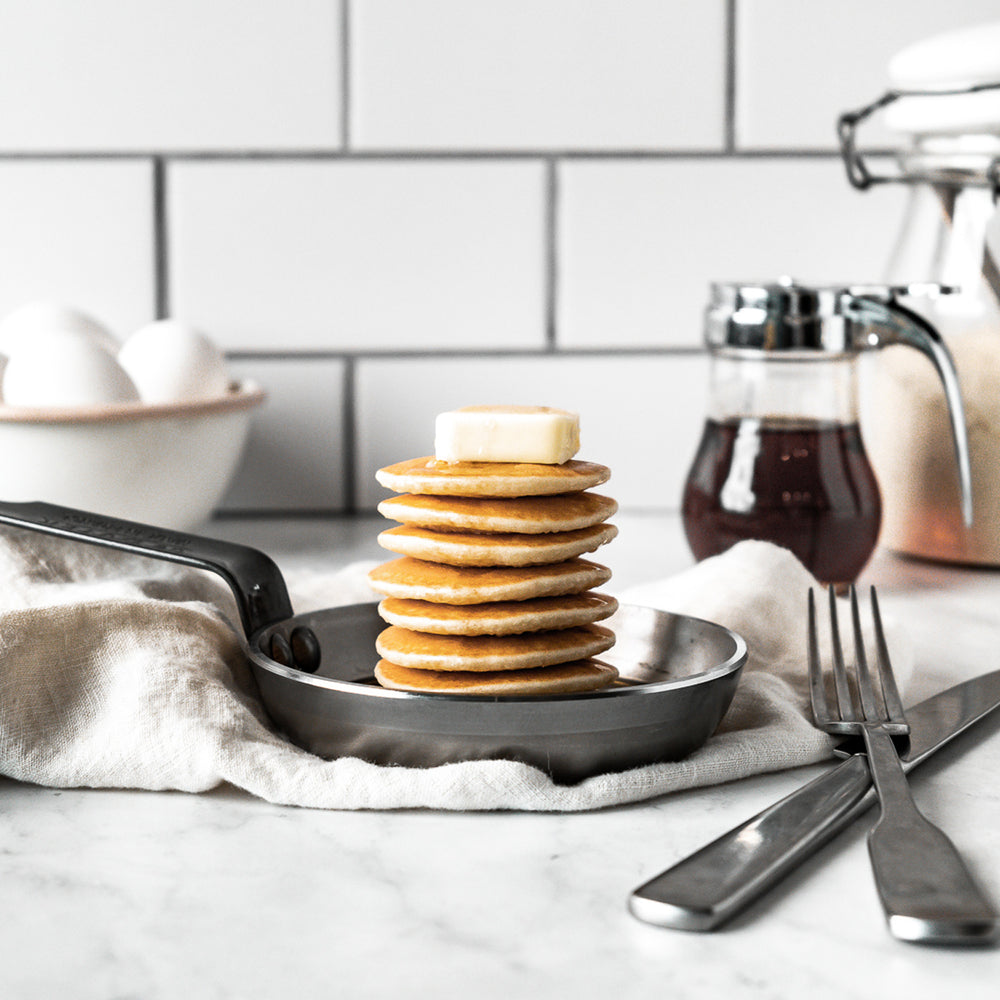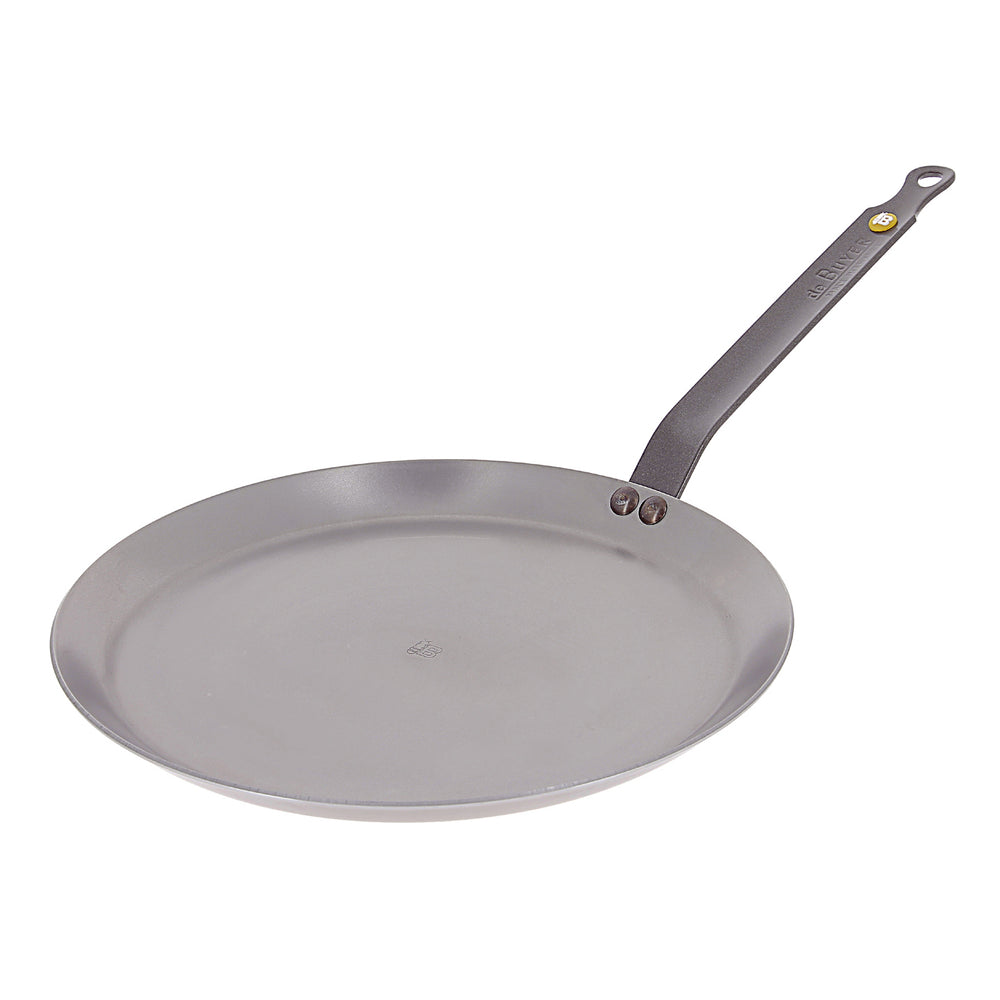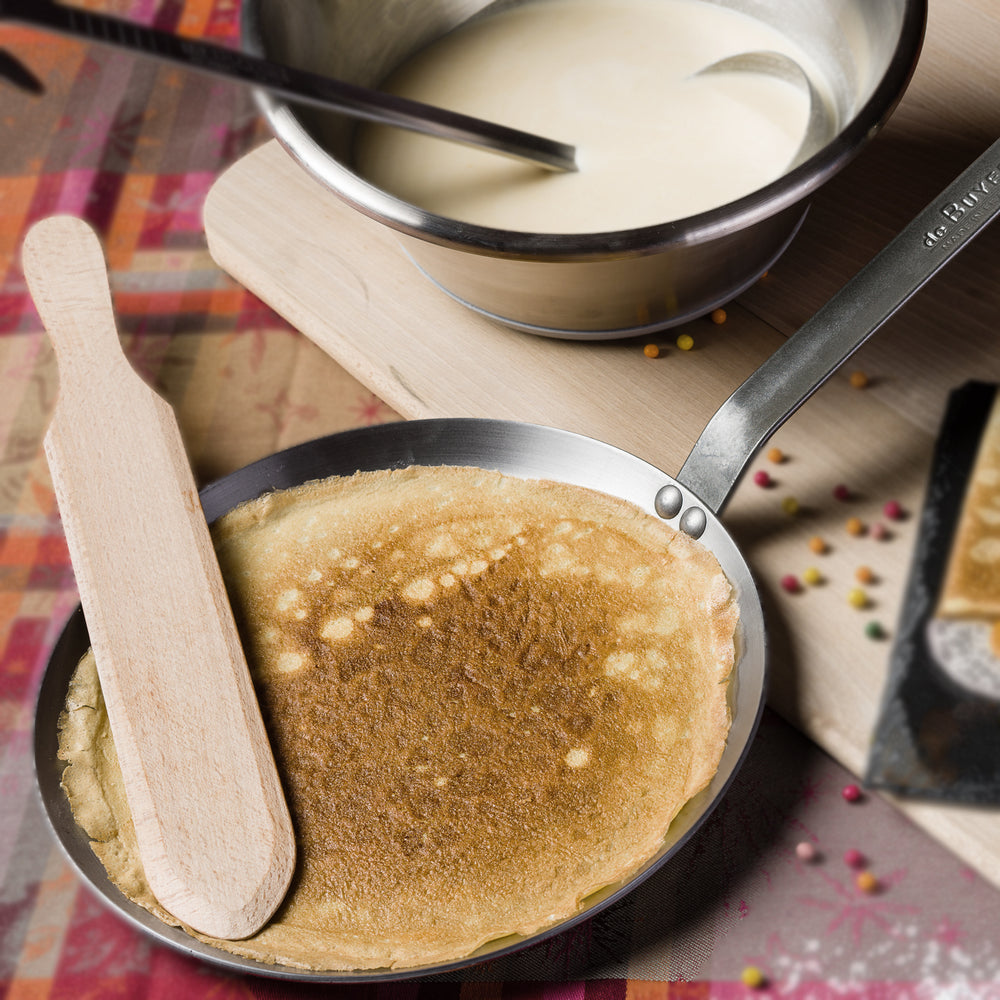How to Season a Cast Iron, Carbon Steel or Spun Iron Pan
First things first: What does it mean to season a pan? Simply put, it means creating a protective barrier ('patina') on the cooking surface of your pan. With time, use, and proper care, this protective barrier turns into a layer that releases food with ease. It won't be as 100% cling-free as a non-stick pan, but it will come close. These were the pans cooks used before non-stick, after all.
There's been a resurgence of interest in cast iron, carbon steel and spun iron recently because, unlike non-stick pans, you won't ever need to replace them (with proper non-stick pan care, non-stick pans will last up to ten years). Cast iron, carbon steel, and spun iron pans, on the other hand, are built to last a lifetime. In fact, they only get better with time, thanks to that patina.
Another brilliant feature of cast iron, carbon steel, and spun iron pans is that these metals excel at reaching and retaining high levels of heat. Translation: perfectly seared meat and vegetables. Expect crispy-skinned salmon, charred Brussels sprouts that will woo even the pickiest of eaters. These pans are naturally induction hob compatible, and will work on open barbecues. As long as the handles are oven-safe, they will work in the oven and covered barbecues like the Big Green Egg too.

What's the Difference Between Cast Iron & Carbon Steel?
Since they are more malleable, carbon steel pans can be rolled and pressed into thinner sheets, and thus shaped like traditional frying pans. This makes carbon steel pans more heat-responsive, and best suited for on-the-hob cooking. (Some carbon steel pans are not suitable for use in the oven, while all cast iron pans are oven-friendly.) This also makes carbon steel pans less likely to crack if dropped.
Which Pans Need Initial Seasoning?

Initial Seasoning
- If your pan is not-pre-seasoned, wash the pan with warm water and washing-up liquid. It's fine to use washing-up liquid here, as you'll be re-seasoning the pan and, in the case of De Buyer carbon steel pans, removing the beeswax coating. If your pan is pre-seasoned, you can just rinse the pan and skip the soap. Dry the pan with a towel, then put on low heat to finish drying.
- Add about enough vegetable or other high-burning oil to cover the base of the pan by about 1/2 cm, plus a few tablespoons of salt and peels from two potatoes (this helps pull any remaining impurities from the pan’s surface). Raise the heat to medium, using tongs to occasionally move the peels around the pan and up the sides to the rim, for 8 to 10 minutes (the pan will turn brown).
- Discard the contents, allow pan to cool, then wipe with paper towels.
- Your pan is now pre-seasoned. It won’t be perfectly easy-release the first time – this takes time and use – but it kick-starts the process. After each use, follow the instructions under the next section, titled ‘Regular Cleaning’.
- Heat your oven to 220°C. Rinse the pan with warm water and washing-up liquid (just rinse if the pan is pre-seasoned). Dry with a towel.
- Place the empty pan over low heat for 2-3 minutes; this opens up its pores. Turn off the heat and pour enough high-burning vegetable oil into the pan that it covers the bottom (up to 1/2 cm) and rub it all over the inside and outside of the pan using kitchen roll or a tea towel. Try to ensure that there is no excess oil – you want just enough for the pan to soak in; any excess might result in sticky patches.
- Place the pan in the oven and leave it there for one hour. Then turn off the heat but keep the pan in the oven until it has completely cooled.
Regular Cleaning
If your pan looks stubbornly dirty, you can use a few spoons of bicarbonate of soda, diluted with water to make a paste. Scrub this all over the pan and wash away the dirt. However, note that this method might require re-seasoning the pan if your patina is not strong enough, as it is more abrasive than salt.
Tips for Cast Iron Cooking & Care
- Until you are confident in your pan’s patina, use oil when you cook in an iron or carbon steel pan. Make sure to only use oils with high burn (smoke) points, such as rapeseed, groundnut and vegetable oil, as these pans get very hot and low burn oils, like extra virgin olive or sesame oil, could scorch the pan and leave a sticky film.
- Do not cook acidic ingredients (tomatoes, wine, citrus) in a cast iron, carbon steel, or spun iron pan, unless your pan is very well seasoned. These ingredients will degrade the seasoning. Even with a well-seasoned pan, we do not recommend cooking these ingredients for a prolonged period of time (above 10 minutes). It is important, for safety reasons, to have a well-seasoned pan, in order to create a barrier between the carbon steel and your food.
- Abrasive scrubbers, such as steel wool, are not recommended; use a lighter-weight bristle brush or kitchen towel. Don’t leave your pan to soak, as this will cause the pan to oxidise (and you’ll have to re-season it).
- Always make certain the pan is totally dry before storing. For total dryness, you can heat it on the hob or in the oven.
- If you accidentally scrub off some of the patina, wipe the pan with a thin coat of oil and place it over high heat for about 10 minutes until the pan darkens (it will smoke; turn on an exhaust fan).
- The cooking of acidic foods – tomatoes, white wine, citrus – may cause the appearance of white stains, especially on pans that have yet to build a strong patina. If this occurs, the pan should be seasoned again.



